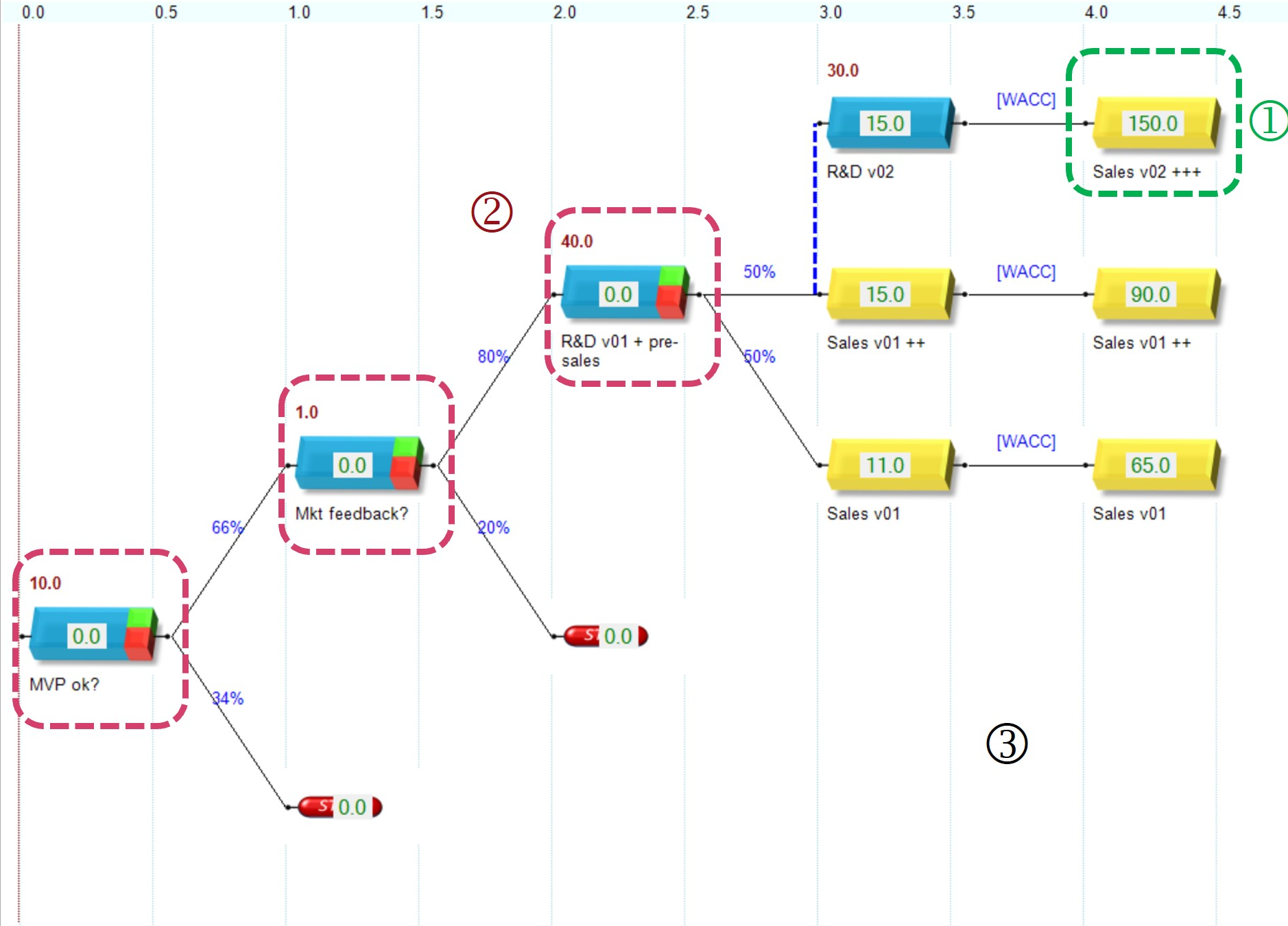Project Design
About 360 wordsAbout 1 min
Designing innovation and transformation projects requires a structured approach that balances ambition with risk management. Strategic-Finance provides a proven methodology and intuitive tools to help you craft, evaluate, and optimize business cases for maximum value creation.
Design Guidelines
To maximize value and minimize risk, apply these best practices when designing your project:
Start with the Optimistic Scenario
- Define the “dream” outcome: highest revenues, lowest costs.
- List all assumptions required to achieve this scenario.
Decompose Uncertainties into Steps
- For each assumption, design a project step that resolves the uncertainty.
- Describe possible outcomes and estimate their probabilities.
- For each step, estimate required resources (investment, time).
Build the Complete Project Tree
- Map out all possible scenarios, including less favorable outcomes (“yellow bricks”).
- Assemble steps so that major investments are deferred until key assumptions are validated.
- Prioritize early, smaller investments to manage risk and enable “fail fast” learning.

Typical Choices (Options)
Real options give you flexibility in project and business decisions. Here are the main types:
- Purchase Option (Deferral Option):
- Freedom to invest or not, based on profit prospects.
- Lets you avoid losses if prospects are poor.
- Can adjust investment amount to match opportunity.
- Expansion Option (Persevere Option):
- Freedom to expand operations for higher profits.
- Requires additional investment.
- Used when expansion is more profitable than staying the same.
- Contraction Option:
- Freedom to downsize operations to save costs.
- Accepts lower profits in exchange for lower costs.
- Useful when variable costs can be reduced.
- Abandonment Option:
- Freedom to abandon a project or business and recover asset value.
- Used when stopping is better than continuing.
- Relies on assets or results that retain market value.
- Switch Option:
- Freedom to change the type or scope of operations.
- Involves switching costs.
- Example: Adjusting production or working hours to market needs.
- Pivot Option (Plan B):
- Freedom to realign the project if profit prospects are weak.
- Requires extra resources or time.
- Enables a strategic change of direction.